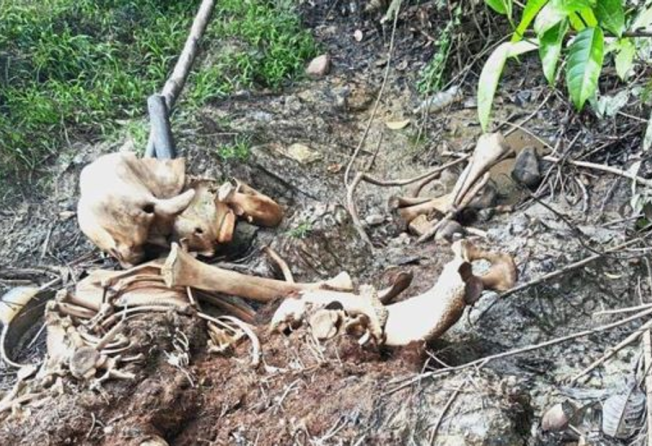Poachers hunt for ivory in Malaysia
Up to three killings have been identified on the heel of China’s announcement that it will close down the trade by the end of 2017

By Muguntan Vanar
On the East Coast of Malaysia, Sabah woke up this New Year’s Day to a new reality; that its critically endangered Borneo Pygmy elephants are being hunted for their ivory.
In the space of just two months, two elephants – including a rare sabre-tusked animal whose rescue from a Tawau plantation in August was featured in newspapers – were found killed.
All fingers are now pointing at poachers who are eyeing the tusks for the lucrative international ivory trade.
Conservationists indicate that there have been three such killings so far, with one discovered in the east coast Kinabatangan area in October last year that was not made public.
A saddened but irate State Tourism, Culture and Environment Minister Datuk Masidi Manjun has ordered Sabah’s Wildlife Department to step up enforcement against poachers.
“There are just too many killings. They need to buck up,” said Masidi, who instructed state director Augustine Tuuga to provide him a full report on the latest killings.
While poaching elephants for ivory has never been a trend in Sabah, the recent three cases show that the animals may now be targeted.
This comes as China – considered the largest ivory market – announced on Friday that it was closing down the trade by the end of the year.
In a statement, Kinabatangan-based Danau Girang Field Centre (DGFC) and Wildlife Rescue Unit (WRU) teams said they were saddened and shocked by the slaughter of the two bull elephants near the Kawag Forest Reserve along the Segama River.
The carcass of the first bull was found on Dec 27 in the middle of an estate bordering the reserve, while that of the sabre-tusked animal – known to researchers as Sabre – was discovered on New Year’s Eve about 1.5km away.
Sabre, which wore a satellite collar, was relocated to the reserve three months ago.
“The tusks were removed from both bulls. We found the skeletal remains of Sabre on New Year’s Eve, with the satellite collar next to the skull,” said DGFC director Dr Benoit Goossens.
“We thought Sabre would be safe there after we fitted a satellite collar at the reserve near Danum.
“We were obviously wrong,” he said, adding that Sabre is believed to have been killed on Nov 21 based on satellite data.
The killings are not believed to have happened at the same time.
Dr Pakeeyaraj Nagalingam, a WRU veterinarian who took part in Sabre’s rescue and relocation, said it appeared there was no safe place for the elephants in Sabah anymore.
“Authorities responsible for enforcement must work harder and smarter if we want to conserve wildlife in Sabah,” he said.
There are an estimated 1,500 to 2,000 pygmy elephants in Sabah forests.
Copyright © 1995-2016 Star Media Group Berhad (ROC 10894D)